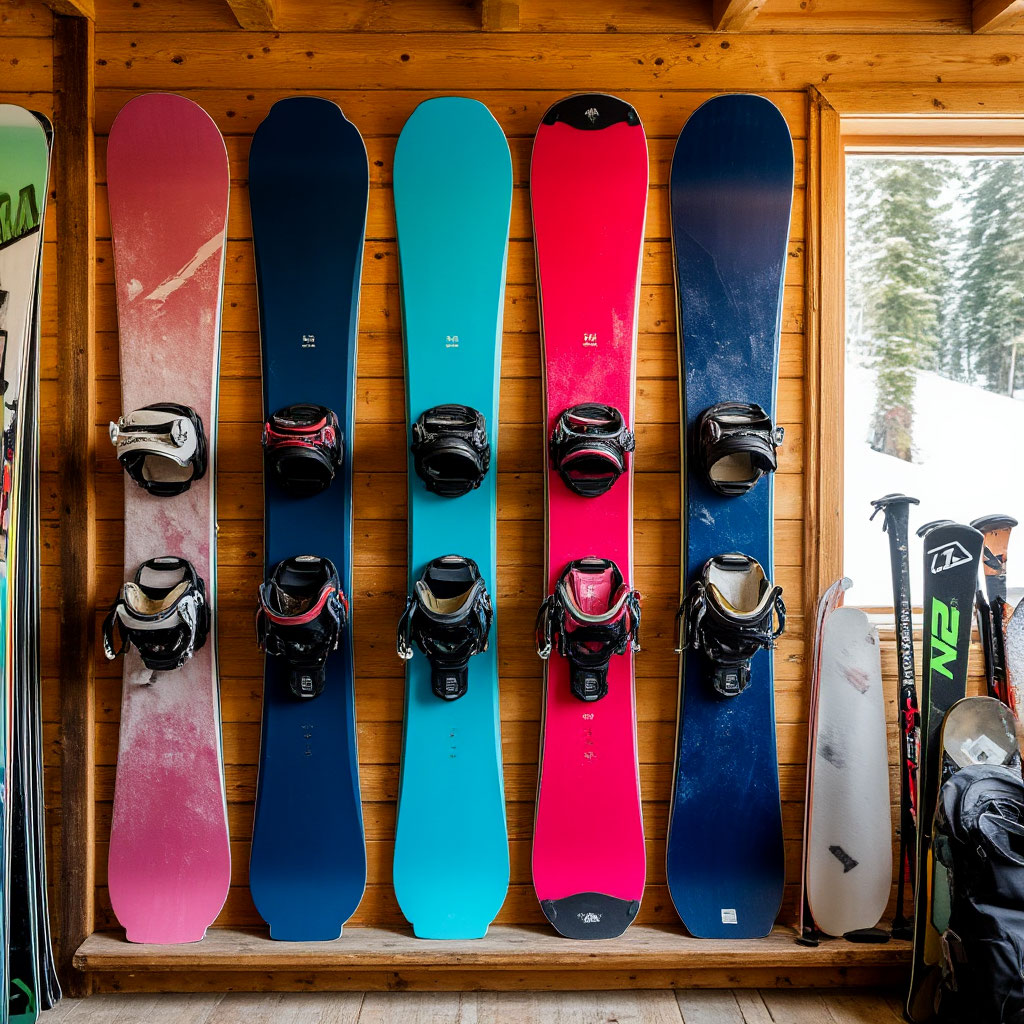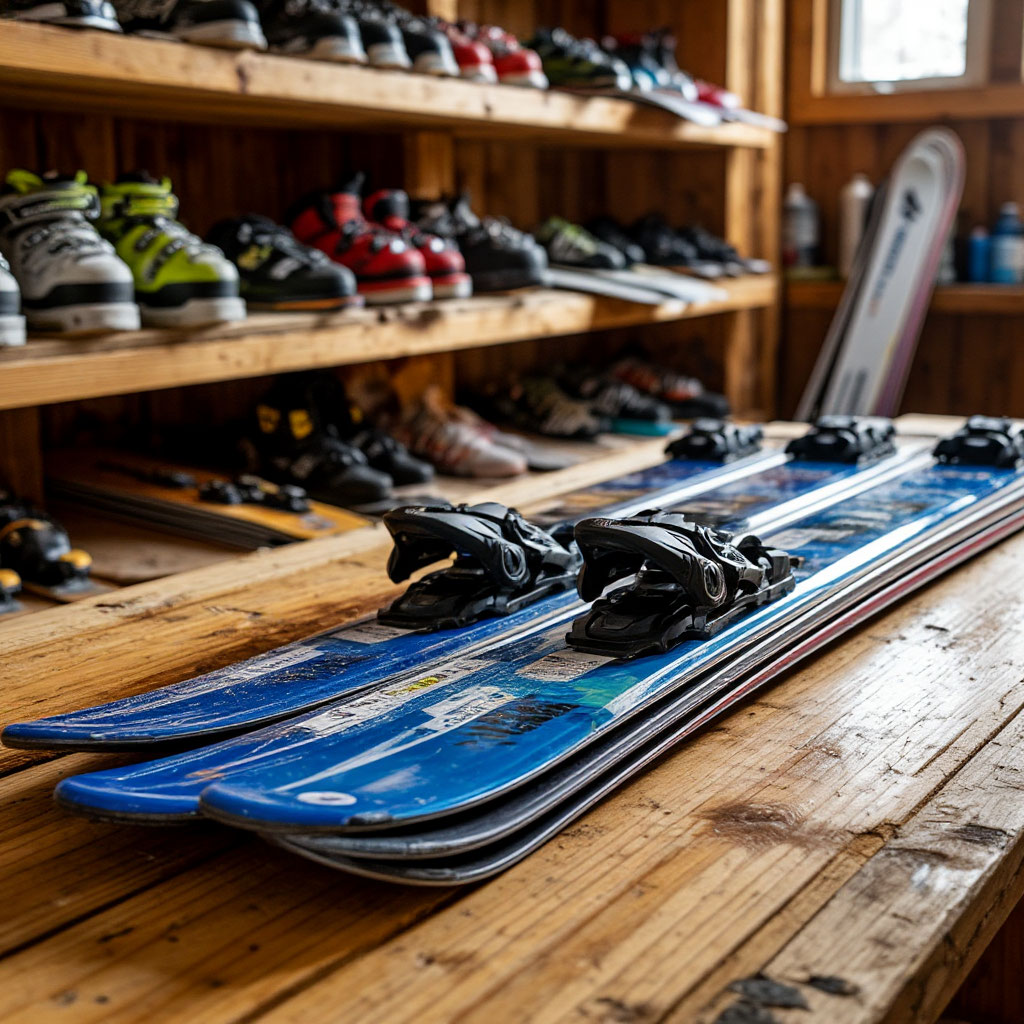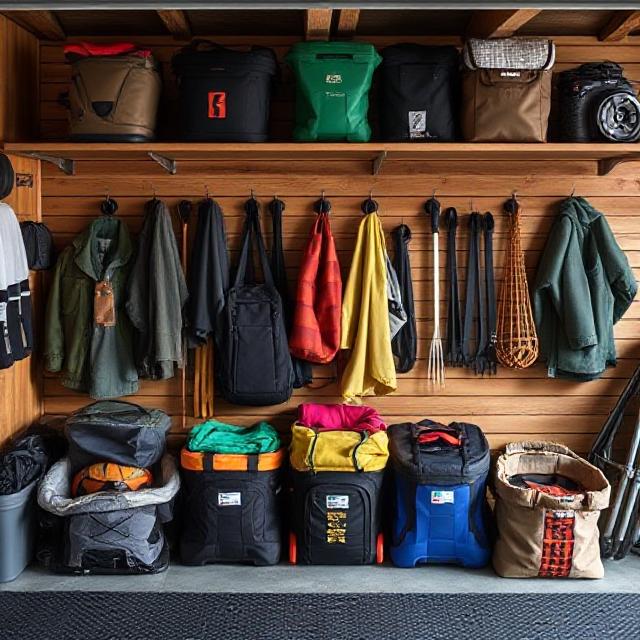Proper storage of your skis and snowboards will keep them fresh for next season. Leaving them in a corner or wet can cause rust, warped bases, or worn bindings. A few simple steps now means less hassle in the future. Your gear is ready to use when the snow returns.

The Right Way to Store Skis & Snowboards
Knowing how to properly store your skis and snowboards will help keep them in tip-top shape for next season. Storing gear in the garage or basement can lead to damage, rust, and warping. A little effort now will save you money and frustration in the future.
Start with a thorough cleaning. Dirt and dust left on bases or bindings can dry out the materials. Use a damp cloth to wipe down the surfaces. Dry them completely. Avoid harsh chemicals that can strip wax or damage the finish.
Bindings also require attention. Loosen the DIN settings to relieve tension on the springs. This will prevent them from wearing out over time. For snowboards, check screws and straps for loose parts. Tighten anything necessary before packing.
Storage position is also important. Skis and boards should be laid flat or upright. Storing them flat for months can cause edges to bend or distort the camber. If space is tight, a wall mount or stand will keep them secure without taking up floor space.

Summer Storage Tips to Prevent Damage
When it comes to storing your skis and snowboards in the off-season, avoiding heat and moisture is key. The best place to store your skis in the summer is in a cool, dry place, but never in a hot attic or damp basement. Temperature changes can warp the base, and moisture can promote rust, so a climate-controlled closet or under-bed storage space is best.
Before packing your gear, clean it thoroughly. Dirt and old wax trap moisture, which accelerates corrosion. Use a base cleaner or mild soap, then dry everything completely. To properly store your snowboard, remove the bindings whenever possible to prevent pressure marks from forming on the board. If you leave them on, loosen the straps to reduce the stress on the materials.
Waxing before storage is a non-negotiable for off-season ski care. A thick layer left unscraped prevents the base from drying out. When winter comes, simply buff off the excess and you’re ready to ski. Avoid plastic bags, which trap condensation. Breathable fabric covers or old cotton sheets allow air to circulate while keeping dust out.
Quick checks to avoid damage:
- Store gear horizontally or vertically – never stack it for long periods of time.
- Keep out of direct sunlight to prevent UV damage.
- Check bindings monthly for loose screws or cracks.
- Reapply edge protectant if humidity spikes.
A little effort now means no surprises when the snow returns.

How to Keep Your Edges Rust-Free
Rust eats away at edges, ruining performance. A few simple steps stop it before it starts. First, clean edges with a soft cloth and rubbing alcohol. This removes salt and moisture that cause corrosion.
A light coat of oil or specialized edge protector adds a barrier. Just a thin layer does the job—too much attracts dirt. Wipe off excess with a clean rag.
| Storage Condition | Rust Risk | Solution |
| Humid area | High | Silica gel packs, dehumidifier |
| Dry climate | Low | Light oil still recommended |
| Near salt (coastal) | Very high | Extra oil, frequent checks |
| Temperature-stable | Minimal | Standard protection suffices |
Check edges every few weeks. If rust spots appear, a gummy stone or fine sandpaper takes them off fast. Don’t wait until winter—catch problems early.

5 Common Storage Mistakes (and How to Avoid Them)
Even if you know how to store your skis and snowboards, small missteps can still cause damage this summer. Avoiding these mistakes will keep your gear in tip-top shape so it’s ready for winter.
1. Leaving Bindings Tight
Storing your skis or snowboards with bindings tightly tightened puts stress on the springs and mechanisms. Always loosen the DIN adjustments on your ski bindings and loosen your snowboard straps to relieve the tension. This prevents wear and tear and ensures trouble-free operation next season.
2. Storing Wet or Dirty Gear
Moisture and dirt cause rust, dry bases, and sticky bindings. Before packing, wipe everything (bases, edges, bindings) with a damp cloth and let it dry completely. A quick wipe prevents long-term damage.
3. Choosing the wrong storage location
Heat, humidity, and direct sunlight will warp bases and fade graphics. The best place to store skis in the summer is in a cool, dry place. A closet or under a bed is better than a damp basement or attic.
4. Protecting the edges
If you’re wondering how to prevent ski edges from rusting, the answer is simple: a thin layer of oil or a specialized protectant. Unprotected edges corrode quickly, especially in damp areas. A quick wipe with a rust inhibitor keeps them sharp.
5. Using impermeable covers
Plastic bags or heavy wraps trap moisture, promoting rust and mildew. Instead, use breathable fabric bags or even an old cotton sheet. This allows air to circulate and keeps dust off your gear.
A little extra care with proper snowboard storage and ski maintenance techniques during the off-season goes a long way. Avoid these common mistakes and your gear will stay in great condition for years to come.
In the video, you can watch a guide on how to properly prepare all your ski gear for storage during the off-season. The author demonstrates how he prepares his equipment so that it will be ready for the next season.
Spending a few minutes now preparing your gear will pay off when winter returns. By following these simple steps, you’ll avoid costly repairs and keep your gear performing at its best. Whether it’s relieving a rig, finding a good storage spot, or protecting edges, every little bit of effort will be worth it.
Tags: Gear, Maintenance, Recovery